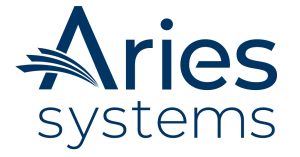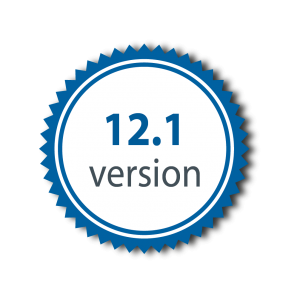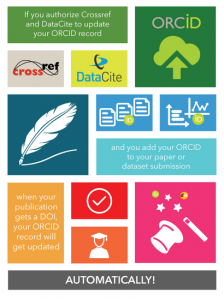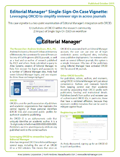
Force11 wants to improve the way journals cite data
With the help of an NIH grant, Force11 is tackling the problem/opportunity of how authors cite data.

With the help of an NIH grant, Force11 is tackling the problem/opportunity of how authors cite data.

By now, many researchers and publishers are familiar with Overleaf– the LaTeX based, online collaboration tool integrated with real time PDF-style preview. This tool has been adopted by many, including Springer journals.

Increasingly, publishers require that authors provide their unique ORCID iD along with files and other metadata when submitting work for publication in peer reviewed journals.

Interested in learning about, and contributing new ideas to Editorial Manager innovations? You’ll want to be in London at EEMUG 2016 on January 15, 2016. If you’re planning to attend, register soon for the following reasons:

Earlier this month, ORCID held its annual US Outreach meeting at GitHub in San Francisco, California.

Last month, SSP hosted a webinar on funder mandates, and what publishers can do to help researchers comply.

At last, the much discussed Manuscripts authoring tool has been released.

Editorial Manager and ProduXion Manager users have recently, or will soon, upgrade to version 12.1. Here’s a list of what’s included in the release, and more importantly, how your workflows will benefit.

What better time? ORCID, CrossRef and DataCite announced yesterday that they will be working together to automatically update researcher ORCID records when Crossref or DataCite receives relevant data that includes an authenticated ORCID iD. Here are some suggestions on how Editorial Manager and ProduXion Manager users can ensure that they are receiving the full benefit of this new functionality.

Everyone’s talking about the innovative new tools and services that authors are using to prepare manuscripts and submit to journals. Manuscripts is one such authoring tool, and here are three things worth knowing about it, along with a brief video demonstration.

In the context of scholarly journal publishing, we typically think of manuscript Metadata as “title,” “authors,” “citations,” and other text elements that are descriptive, but also reproduced in the body of the manuscript. The most common use of Metadata is for manuscript discovery.
